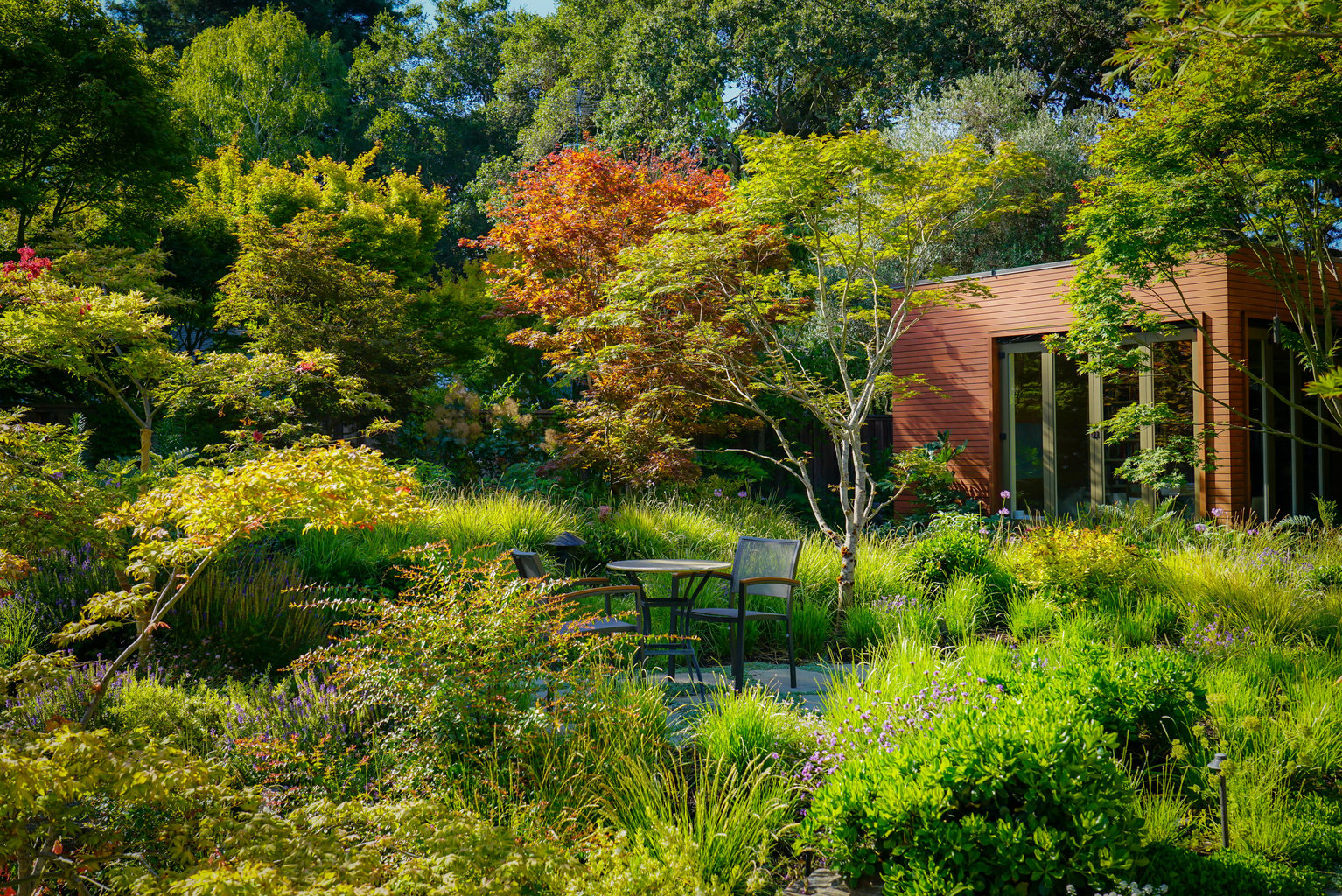

Contributor
- Topics: Archive

The ten species of Beschorneria form an interesting but little known genus in the agave family (Agavaceae). Although several Beschorneria have great garden potential, they remain underutilized. In particular, Beschorneria rigida stands out as a plant worthy of a prominent spot in many gardens.
Each of the ten Beschorneria species originate in Mexico, but their ranges vary considerably. Beschorneria rigida is naturally found in the understory of highland oak and pine forests from 6,000 to 8,000 feet elevation in the states of Guanajuato, San Luis Potosi, and Tamaulipas in central Mexico. They attract, and are pollinated by, hummingbirds.
All species of Beschorneria form rosettes of succulent leaves. They display a wide variety in leaf color and stature, from the eight-foot glaucus leaves of B. yuccoides subsp. yuccoides to the bright green leaves of the trunk-forming B. albiflora.
The stature of Beschorneria rigida is ideal for garden use; it sports mid-green sword-shaped leaves, one inch wide by two feet long, and is the most floriferous member of the genus. The inflorescence is truly spectacular, with a strong appeal to those who are not timid about color. The arching flower stalks range from three to five feet tall; both the stalks and flower stems are magenta. The two-inch-long, pendant tubular flowers bear magenta sepals and chartreuse petals—beautiful, but definitely not subtle. Although dependent on cultural conditions, the flowers generally open in late spring to early summer and can last for several weeks. The dramatic seed pods are a bonus: three-inch swollen magenta pods, sometimes streaked with chartreuse or cream, persist on the flower stalks for several months into late fall, eventually dehiscing to reveal black shiny seeds. Best of all, flowering does not end in the plant’s death. Beschorneria is not monocarpic; the same rosette will bloom year after year, even as more rosettes develop around the mother plant.
Generally, Beschorneria are not overly fussy and are quite easy to grow. Deer tend to avoid them. Unlike most members of the family, their leaves are soft and lack rigid marginal or terminal spines, so the plants are easier to work around in the garden. While preferring good drainage, they are more tolerant of clay soils than many of their kin but appreciate a humus-rich mulch. Beschorneria rigida is fairly tolerant of drought once established; consistent with its origins in a location of summer rainfall, however, it looks best with some summer water. Although ideal for use in areas with dry partial shade, in mild climates they can be planted in full sun; more sun exposure results in a greater floral display. Their cold tolerance limits are still uncertain, although they have weathered exposure to winter temperatures in the mid-20s F without damage.
The University of California Botanical Garden at Berkeley acquired seed of Beschornia rigida collected by John Fairey and Carl Schoenfeld of Peckerwood Gardens, Texas. The Garden had six different Beschorneria in its collection (five identified and one that was undetermined). In 2004, guided by a botanical key produced by Abisai Josue Garcia Mendoza in his 1987 masters’ thesis at the Universidad Nacional Autonoma de Mexico, the previously unnamed Beschorneria was identified as B. rigida.
As part of the Pacific Plant Promotions program, the University of California Botanical Gar-den at Berkeley will be offering seed-grown plants of Beschorneria rigida to readers of Pacific Horticulture for shipment in May and June 2006. To order one, see the Pacific Plant Promotions reservation card for details.
Share:
Social Media
Garden Futurist Podcast
Most Popular
Videos
Topics
Related Posts

Low Maintenance Gardens – Better for Pollinators and People
Autumn 2022 “I come out every day. It’s therapy, my meditation.” Janet’s young garden transformed from overgrown, invasive plants to mostly natives. The dailiness of

Invasive Plants Are Still Being Sold: Preventing Noxious Weeds in Your Landscape
Autumn 2022 With so many beautiful ornamental plant species and cultivars throughout California and the Pacific Northwest, how do you decide which ones to include

Garden Design in Steppe with Transforming Landscapes with Garden Futurist Emmanuel Didier
Summer 2022 Listen to full Garden Futurist: Episode XVII podcast here. Emmanuel Didier, Principal and Creative Director at Didier Design Studio is a leading figure

Seslerias: Versatile Groundcover Meadow Grasses
Summer 2022 Without question, the most beautiful and versatile of all the groundcover meadow grasses are the moor grasses (Sesleria). Moor grasses tick off all









Responses